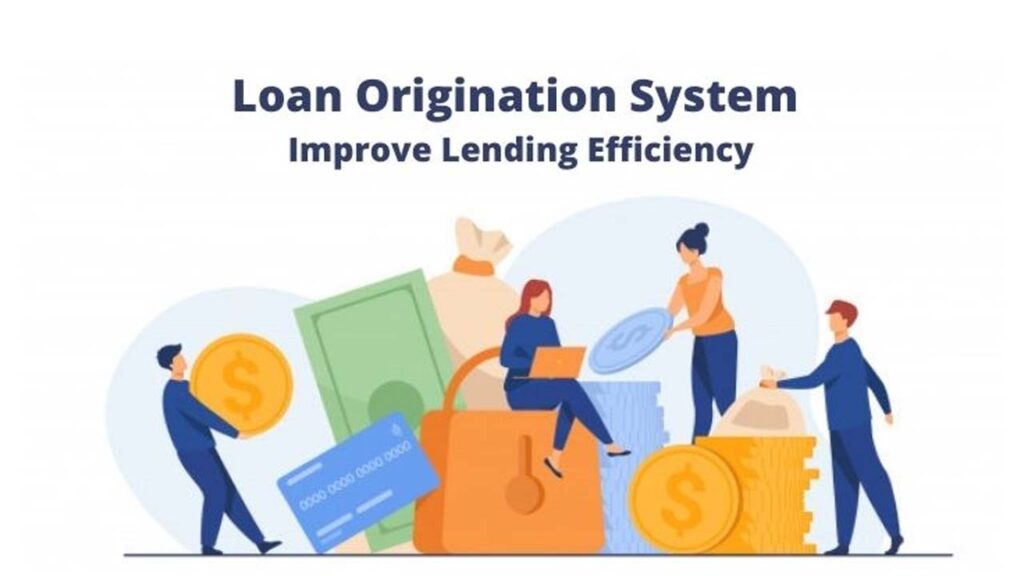SGDLoan.com – In the fast-evolving financial landscape of Singapore, deploying a reliable commercial loan origination system is no longer a luxury but a necessity.
Banks and financial institutions are constantly challenged to enhance customer experiences, manage risks, and remain compliant with rigorous regulations.
Implementing an efficient commercial loan origination system ensures streamlined processes, faster turnaround times, and a competitive advantage in the market.
Before diving deeper into the details, it is important to understand the core concepts and significance behind loan origination and related systems.
What is Loan Origination?

Loan origination is the end-to-end process of initiating, underwriting, and disbursing a new loan.
It represents the lifecycle of a loan application, starting from the moment a customer expresses interest until the loan is fully approved and funded.
In the commercial lending space, loan origination involves larger sums, more complex evaluations, and stricter compliance requirements compared to consumer lending.
In Singapore, due to strict oversight from regulatory bodies like the Monetary Authority of Singapore (MAS), financial institutions must ensure that their origination processes are both efficient and transparent.
The typical loan origination journey includes:
- Pre-qualification: Initial screening of the borrower’s creditworthiness and business viability.
- Application: Collection of detailed financial data, supporting documents, and formal application submission.
- Underwriting: Risk evaluation through both automated systems and human credit analysts.
- Approval: Formal decision-making by the credit committee or designated officers.
- Disbursement: Transfer of funds to the borrower, followed by contractual agreement execution.
Ensuring each stage operates seamlessly is critical to customer satisfaction and institutional profitability.
An optimised loan origination system greatly assists in managing these stages efficiently while maintaining compliance standards.
Understanding Commercial Loan Origination Systems

Choosing a modern commercial loan origination system means embracing automation and intelligent workflows that significantly reduce manual workloads and processing times.
Commercial loan origination systems serve as a digital backbone for managing loan applications, customer data, credit assessments, and internal approvals.
By centralising operations, these systems offer greater visibility and control over lending portfolios.
Typical functionalities of a commercial loan origination system include:
- Customer Onboarding Automation: Simplifying the intake of new clients through digital forms and identity verification.
- Integrated Credit Analysis: Running comprehensive credit checks against global and local databases, including Credit Bureau Singapore (CBS).
- Dynamic Risk Assessment Models: Using AI-driven algorithms to evaluate borrower risk profiles more accurately and fairly.
- Document Management and Compliance: Storing, securing, and tracking documents with features like e-signatures and audit trails.
- Real-Time Reporting and Analytics: Offering management dashboards for real-time insights into loan pipelines and risk exposure.
- Workflow Customisation: Allowing institutions to modify processes to align with different loan products or organisational policies.
A well-implemented commercial loan origination system not only improves internal efficiency but also directly impacts customer experience by significantly reducing loan processing times and increasing transparency.
According to PwC Singapore, digital loan origination reduces processing costs by up to 70% compared to traditional methods.
The Credit Origination Process Explained

Credit origination is a systematic approach to evaluating and approving loan requests while minimising risks and ensuring profitability.
A well-defined credit origination process helps institutions maintain healthy loan portfolios and avoid high default rates.
Financial institutions deploying a commercial loan origination system can expect to enhance every phase of this process.
The detailed steps of the credit origination process include:
- Customer Acquisition and Initial Contact:
- Marketing efforts, referrals, or direct inquiries initiate the relationship.
- Preliminary discussions assess the borrower’s needs and eligibility.
- Application Data Collection:
- Gathering business financial statements, tax returns, projected cash flows, and legal documentation.
- Digitising documents using OCR (Optical Character Recognition) tools for easier processing.
- Preliminary Risk Assessment:
- Automated scoring based on credit history, business industry, and financial ratios.
- Risk flags raised for manual review if necessary.
- Comprehensive Underwriting:
- Detailed analysis by credit analysts involving stress testing, debt-service coverage ratios, and sector-specific risks.
- Loan Structuring and Approval:
- Determination of loan terms, interest rates, covenants, and repayment schedules.
- Approval workflows managed digitally with clear audit trails.
- Documentation and Disbursement:
- Preparation and signing of loan agreements.
- Final disbursement of funds following compliance clearance.
Through automation, each of these stages becomes more predictable, less prone to human error, and faster to complete.
A strong commercial loan origination system helps institutions in Singapore manage this intricate workflow in a more structured and compliant manner.
Origination and Distribution in Commercial Lending

Understanding origination and distribution in commercial lending is critical for managing liquidity and credit risk.
Origination refers to the process of generating new loan assets, while distribution involves selling those assets, fully or partially, to investors or other financial institutions.
This model allows banks to free up capital and offer more loans without inflating their balance sheets unnecessarily.
Key benefits of origination and distribution models:
- Risk Diversification: Reducing exposure to specific sectors or borrower types.
- Capital Efficiency: Meeting regulatory capital requirements by moving loans off the balance sheet.
- Revenue Generation: Earning fees through syndication or securitisation without maintaining full credit risk.
Modern commercial loan origination systems often come equipped with features that support syndication processes, making it easier for banks to manage participations and coordinate with multiple lenders.
Singapore’s active participation in the Asia Pacific syndicated loan markets demonstrates the importance of this capability for local financial institutions.
Loan Origination System Vendors: Choosing the Right Partner

Selecting the right loan origination system vendor can significantly impact a bank’s operational agility, compliance posture, and client satisfaction.
Institutions should conduct thorough due diligence before making their choice.
Key factors to consider when evaluating loan origination system vendors:
- Local Compliance Expertise: Ensure the vendor is familiar with Singapore’s regulatory frameworks, including MAS guidelines.
- Customisability and Scalability: Solutions should be adaptable to different lending models and business growth.
- Security Standards: Look for ISO 27001 certification and GDPR/PDPA compliance.
- Integration Capabilities: Ability to connect with existing CRM, ERP, KYC/AML systems, and external data providers.
- Post-Implementation Support: Availability of local technical support teams for rapid troubleshooting and system maintenance.
Leading vendors offering top commercial loan origination systems include:
- Finastra: Known for their modular approach to digital banking solutions.
- FIS: Offers robust lending platforms with deep risk management features.
- nCino: Cloud-native solutions that enhance visibility and workflow automation.
- Temenos: Specialises in end-to-end core banking and loan origination digitalisation.
- CRIF Singapore: Provides solutions tailored to Southeast Asia’s unique financial landscapes.
A 2024 report by Gartner noted that institutions selecting vendors based on open API structures and modular designs experience faster digital adaptation and better ROI.
Difference Between Loan Origination System and Loan Management System

Clarifying the difference between loan origination system and loan management system helps institutions implement the right solutions for each stage of the loan lifecycle.
Although they are related, they address fundamentally different operational phases.
| Feature | Loan Origination System | Loan Management System |
|---|---|---|
| Objective | Manage new loan applications from inquiry to disbursement | Manage loans after disbursement through to closure |
| Key Functions | Application intake, underwriting, approvals | Payment processing, collections, delinquency management |
| User Focus | Sales and credit teams | Operations and servicing teams |
| Regulatory Focus | KYC, AML checks, loan disclosures | Reporting, compliance with loan servicing standards |
Both systems can often be integrated for seamless transition and data consistency across the customer lifecycle.
Investing in both ensures an end-to-end digital lending journey that enhances client retention and operational resilience.
Future Trends in Commercial Loan Origination Systems
The future of commercial loan origination systems is being shaped by rapid technological innovation and evolving customer expectations.
Staying ahead requires institutions to embrace these emerging trends.
Major future trends include:
- Artificial Intelligence (AI): Predictive credit scoring models powered by AI can identify potential risks more accurately and faster than traditional models.
- Blockchain Integration: Providing tamper-proof document storage and transaction verification, improving security, and reducing fraud.
- Open Banking APIs: Facilitating seamless integration with third-party financial data sources for better borrower insights.
- Robotic Process Automation (RPA): Automating repetitive tasks like document verification, customer notifications, and report generation.
- Regulatory Technology (RegTech): Assisting with real-time compliance monitoring, automatic reporting, and audit preparation.
Singapore’s Smart Nation initiative is driving financial institutions toward greater digital innovation, and adopting cutting-edge commercial loan origination systems will be essential to remain competitive.
According to Accenture, banks adopting AI and RPA in loan origination processes have reported a 50% improvement in customer onboarding times.
Commercial loan origination systems are vital for modern commercial lending operations, especially in Singapore’s dynamic and highly regulated environment.
A well-implemented commercial loan origination system supports faster credit origination processes, improves customer satisfaction, ensures compliance, and enhances overall operational efficiency.
By understanding what a commercial loan origination system offers, how the credit origination process functions, and how to differentiate between origination and management systems, financial institutions can make informed, strategic decisions that drive sustainable growth.
Choosing the right vendors and embracing future trends further ensures that banks and financial organisations stay ahead of the curve while meeting the ever-evolving expectations of the Singaporean market.









